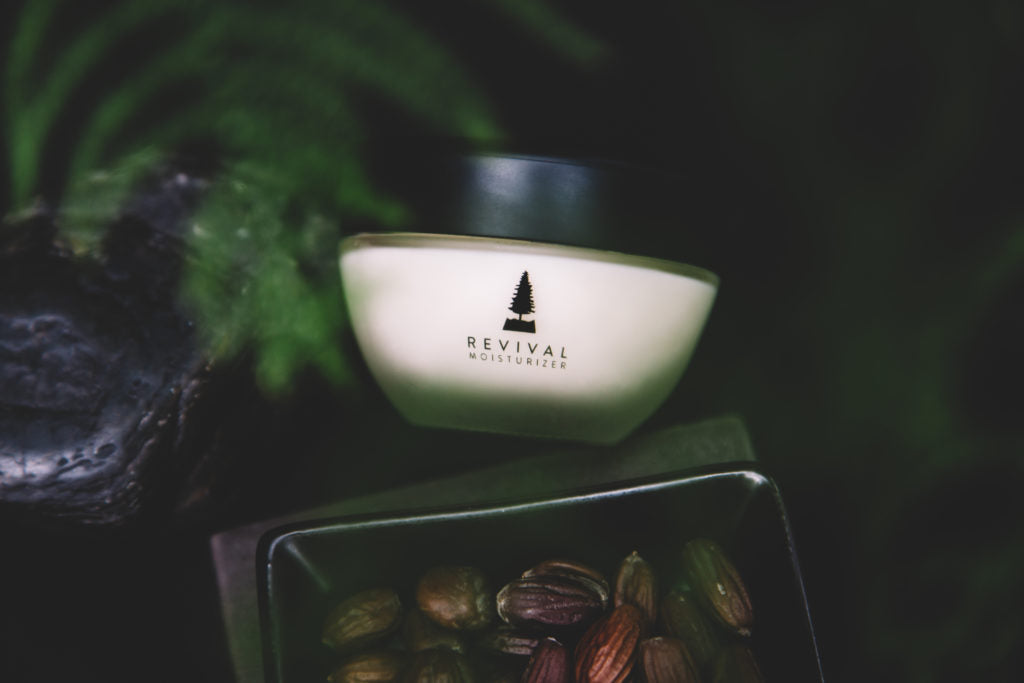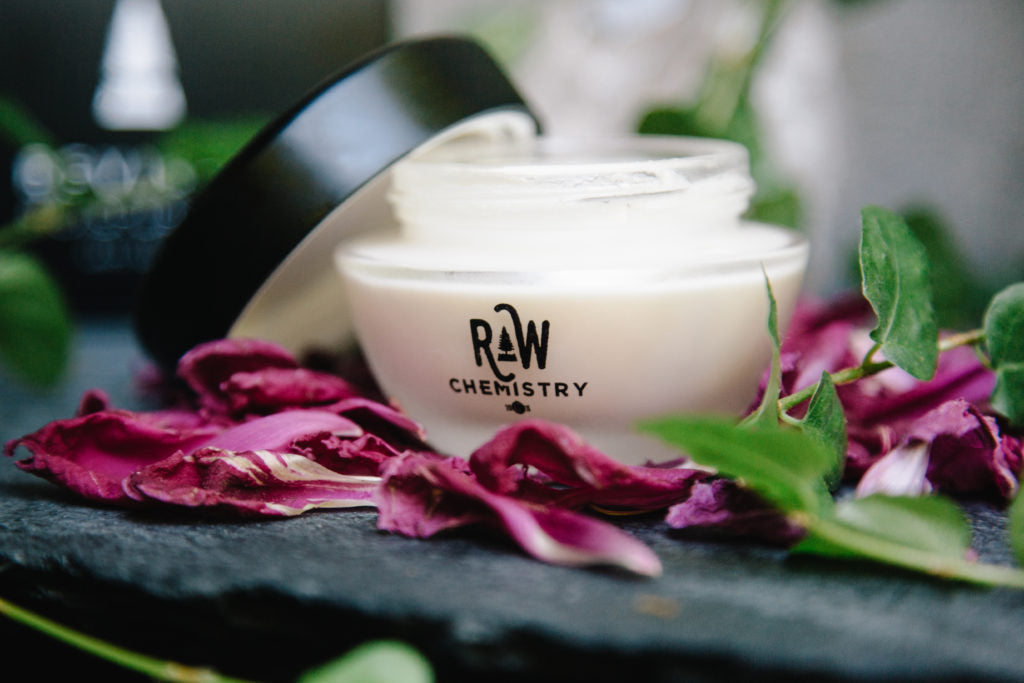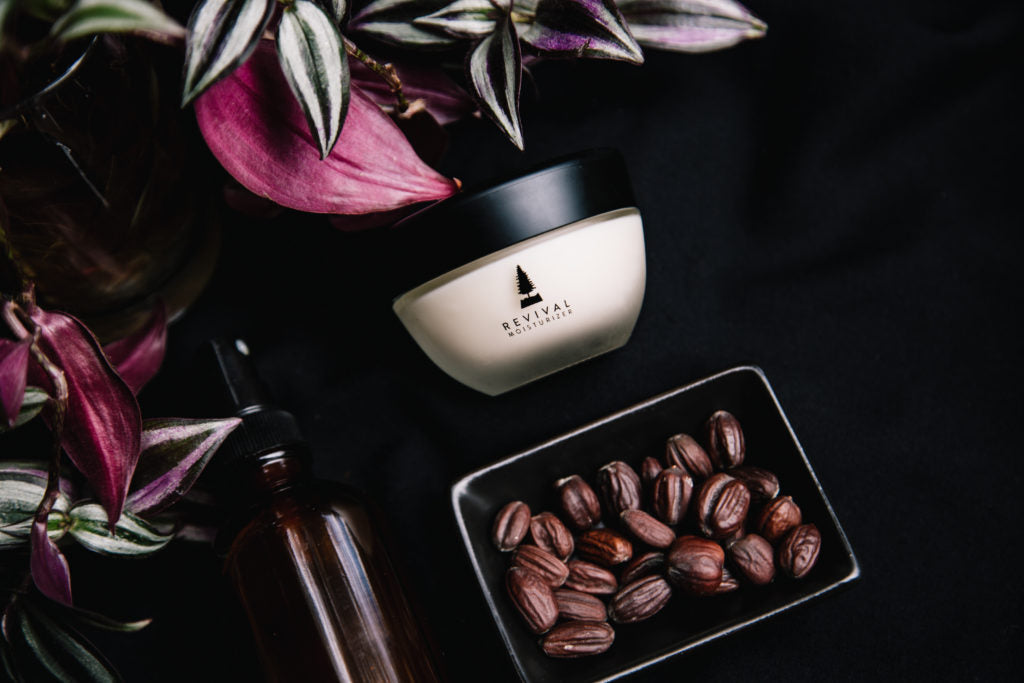
The Chemicals in Everyday Skincare - to Remove from Daily Routine
There are toxic skincare ingredients found in the majority of USA sold beauty products - without consumers knowing.
Even the most aware people, like those who read food ingredient labels, may be applying face washes, toners, moisturizers and makeup that have ingredients marketed as safe - that are actually damaging.
While we know to recycle and hear organic is healthiest -
The big challenge?
The government & beauty industry have made it hard to understand what beauty products are safe - and what ingredients are harmful.
Even bottles labeled “organic” or “natural” may still have parabens, chemicals and carcinogens lurking within them. Thankfully, with our straight forward list of the top ingredients to avoid in face moisturizer and other products, it will be easier to spot what products are safe - and which have the chemicals that will seep toxins into your skin.
Because most people, especially women, wear far more chemicals than they realize.
“We, as women, may be placing up to 500 chemicals on our bodies each day during our morning and nighttime routines!
The unfortunate part is, this exposure adds up over time and can negatively impact the way our bodies function — from our endocrine system to our digestive system,” says founder of Shop Good, which promotes natural beauty solutions.

It is time to get some of those (approximately 500!) chemicals off of your luscious skin.
In this guide, we are going to share:
- Why even products labeled “natural” can still be hazardous
- What chemicals to avoid in skincare - immediately (This includes chemicals to avoid in facewash, creams and other beauty products)
- The next step to get rid of these bad ingredients (in the most budget-friendly way)
But I buy products labeled “natural” - is that enough?
Before we reveal the worst toxic skincare ingredients you’ll want to check for in your bathroom cabinet as soon as possible, we want to be sure you’re aware of a common lie.
We are led to believe, by the majority of beauty companies, that a label of “natural” means it must be better. However, natural can simply mean “plant-based”. Natural doesn’t mean that the once-rooted-in-the-ground substance hasn’t been highly processed and wasn’t immersed in pesticides.
It’s like saying high fructose corn syrup is a natural plant-based ingredient - rather than a sugar-packed, unhealthy substance found in too many modern foods.
To learn more, including the difference between the terms natural, clean and organic, please reference → What Makes a Store-Bought Beauty Product “Natural”?
What ingredients to avoid in skincare
It’s time to breakdown the list of toxic skincare ingredients to avoid like the (modern, daily inundation-like) plague.
Fake fragrances
Many “fragrance”-soaked products have led to allergies, dermatitis and even had a negative impact on hormones - including the reproductive system. This is not simply that pink-glitter-bottle of fruity perfume. Fragrances are commonly found in moisturizing creams, body washes (from “tropical island” to “berry mix”) and hair washing products.

If a product has a natural scent due to ingredients as nature intended, such as lavender, eucalyptus or rose that would not typically cause the same time of sensitivity and irritation of the skin.
Propylene Glycol (PG)
In many moisturizers, hair washing products and sunscreens, you’ll find Propylene Glycol - which is created after a few byproducts of a - fossil fuel. PG is also a common ingredient of electronic cigarettes. When put in beauty products, PG can cause an allergic reaction or so much irritation, it leads to mild conjunctivitis.
Also used in food products, often to decrease moisture levels for foods like coconut shavings, there have been other concerns cited. According to Healthline, some reports have cited propylene glycol inducing brain-related (neurological) symptoms.
Parabens
The #1 purpose of the paraben family (which has multiple types of parabens) is to help preserve products so they last longer. What most companies do not feature on their label? Parabens, which are in a high volume of products in US stores, can disrupt our natural hormones. It is possible for parabens to cause issues with fertility and even be carcinogenic.

Phthalates
This is one of the bad ingredients in face moisturizer and other products.
For many beauty solutions, all the ingredients do not form together in a natural blend. That is where diethyl phthalate enters. It is in a frightening number of perfumes, as well as face and body lotions. Studies are finding even more links to hormone and endocrine-related issues, such as spiked breast cancer and even birth defects.
This is the scariest aspect of phthalates: They can be dubbed part of “fragrance” and therefore, companies don’t have to list what’s in it. When a company claims they want to maintain their “secret formula”, the law says they do NOT have to disclose the ingredients - even the dangerous ones.
Sodium Lauryl Sulfate (SLS)
According to the Huffington Post, more than 90% of personal care and cleaning products have SLS, which can bond with other chemicals to become cancer-causing. Known to irritate the skin and eyes, “A major concern about SLS is its potential to interact and combine with other chemicals to form nitrosamines, a carcinogen,” the article shares. “These combinations can lead to a host of other issues like kidney and respiratory damage.”
What to do next
Within the next 24 hours, go into your cosmetic bags, bathroom cabinets, shower shelving and anywhere else you store face washes, lotions, shampoos, conditioners and any other beauty products.
Now that you know what ingredients to avoid in skincare (the worst ones anyhow), read through the ingredients on the back of each bottle. It may feel quite shocking to see just how much of your beauty routine is inundated with harmful chemicals.
The biggest source of relief is knowing you have the power to intentionally get rid of these harmful ingredients and replace your routines with new solutions that’ll contribute to your best, healthiest life for the long-term.
What to replace first
We understand that replacing all of your beauty products may be too expensive to do all at once. That is okay. Simply switch in healthier options step by step.
What to switch first?
The products placed on your face every morning and night, which your skin absorbs the most of:
Skin cleanser and moisturizer
Because the skin absorbs these so readily, you want to be sure the safest ingredients are in them. Countless consumers are praising the revolutionary changes experienced upon switching to a vegan, natural moisturizer with only the best ingredients (like essential oils!)


